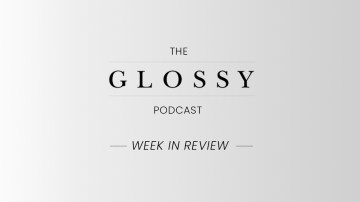Introducing our Return to Analog series. All week, Glossy will be running stories on the fashion and beauty brands that are embracing all things analog and retro, including those eschewing social media marketing or AI and those embracing traditional crafts or print media.
Once upon a time, in the early aughts, there was Bloglovin’, an RSS (Really Simple Syndication) reader where fashion-forward media consumers could check in with their favorite bloggers in one place. Bloglovin’ still exists, but in the past year, many one-time bloggers have ditched the format for Substack. Much like an RSS feed, the platform aggregates written content — in the form of regular newsletters — allowing fans to check in with content creators in one place.
In Substack, creators are finding a new hub for community and like-minded fashion fans, fueled, in part, by an active comments section that harkens back to the early days of blogs.
Among Substack’s popular fashion content hubs are “The Cereal Aisle” by Leandra Medine (over 100,000 subscribers), “Magaisin” by Laura Reilly (over 20,000 subscribers) and “5 Things You Should Buy” by Becky Malinsky (over 10,000 subscribers).
For many writers, Substack has provided a means to an end — the end being a new way to make a living as an independent writer or creator. Writing has never been a lucrative career — but as stated by Kim France, the one-time editor-in-chief of Lucky Magazine who now runs a Substack called “Girls of a Certain Age,” “Substack gave a generation of magazine writers and editors their careers back, [and] that’s a seriously great thing.”
“Writers in the fashion and beauty space are now using the subscription model to get paid for the content they work so hard to create, without a middleman,” said Christina Loff, Substack’s head of lifestyle partnerships. “Many creators use affiliate links and do brand partnerships here, too, but a lot of writers in the space are finding freedom in this model, and finding that readers will pay them directly to get their honest takes, free of ads.”
In addition to selling subscriptions, which typically go for $5-$8 a month, Substack writers have an increasing money-making opportunity in the form of affiliate links — and brands are also catching onto the opportunity, as well.
For her part, Madeleine Cohen, founder of the barely 4-month-old fashion brand Nelle Atelier, said she’s driven significant sales of her company’s petite-sized denim through Substack, as well as TikTok. Compared to Instagram and Instagram Stories, these platforms allow for more storytelling and explanation about the fit, she said.
Cohen also attributed Nelle Atelier’s success on Substack to the platform’s high level of engagement. On Instagram, she said, people are rapidly clicking through Stories — they’re not as much paying attention as when they sit down to read a Substack post they’re paying for.
What’s more, as opposed to reaching out to creators to offer samples or initiate affiliate partnerships, Cohen said, Substacker partnerships have often been established vis-à-vis inbound inquiries. The first to reach out to the brand was Jane Herman, writer of “Jane On Jeans.” Herman first heard about Nelle Atelier in her newsletter’s comments section, where recommendations are furiously exchanged and discussed, and items are even sold. Herman has since mentioned the brand in numerous posts and given it a shoutout on Vogue.com.
Other Substackers Cohen has since gifted include Viv Chen, writer of “Molehill,” and Em Seely-Katz, a writer at aforementioned “Magasin.” Both have since mentioned the brand on their respective Substacks.
“On a day that a Substack [featuring the brand] is published, we typically see 3-5x our average sales volume,” Cohen said, speaking to Substack’s impact on her nascent business.
Almina Concept, a Los Angeles-based womenswear brand, has also seen the impact of Substackers’ endorsements. For example, when stylist and Substacker Ilana Torbiner, writer of the newsletter “Ilana’s Substack” (over 1,000 subscribers), mentioned the brand’s Wool V Neck Sweater, traffic to the brand’s site increased by 25% and the sweater sold out by the end of the week, said Angela Gahng, Almina Concept’s founder and CEO.
“A lot of these girls have very strong followings,” Gahng said. “They may only have 20,000-30,000 followers, but their followers really appreciate their style. … They’re like editors curating for the people who are interested in just them.” Gahng said.
Almina Concept has also seen a lift from coverage by another former magazine editor turned Substacker, Laurel Pantin, who writes the newsletter “Earl Earl” (over 10,000 subscribers). Pantin is a fan of the brand’s Classic Crew Wool Cardigan, which she has mentioned a handful of times. The style has since sold out multiple times, Gahng said.
Footwear brand Freda Salvador has seen similar Substack-driven spikes. “We are just starting to see an uptick in sales from Substack and intend to lean into the channel more,” said co-founder Megan Papay. “It feels authentic.” She referenced a March post by Alicia Lund, whose Substack is eponymous. Lund included the brand’s ballet flat in a roundup, noting, “The bow is a little feminine for me, so I’ve been styling these with a bit more of a tomboy vibe.” This mention drove Lund’s monthly affiliate sales up 66%, compared to February, and 150% from January.
Meanwhile, Free People is experimenting with official Substack partnerships.
“Our team has seen some of our favorite influencers start Substacks in the past few months, and having shopped Substack newsletters ourselves, we saw this as a new platform to test within our influencer marketing strategy,” said Libby Strachan, Free People’s director of brand marketing. Free People recently ran its first Substack newsletter sponsorship, with Emily Sundberg’s “Feed Me.”
“Emily approached us with the idea,” Strachan said. “She planned to focus the newsletter on a vacation she was taking, so we gave her free rein to select and feature products she was excited to wear. She utilized affiliate links throughout the story and ran a short ‘presented by’ blurb by us for approval before publishing.”
The sponsorship drove “significant click-throughs and sales for us,” Strachan said, though she declined to elaborate. Moving forward, she said, Free People plans to continue to experiment with new ways to work with Substack creators.
For her part, France started her Substack “Girls of a Certain Age,” in May after running a blog of the same name for 12 years. The benefits included joining a community, where readers could find her work alongside that of other like-minded writers and members of the wider fashion community.
“Rather than being my little tiny blog in some forgotten corner of the internet, I was part of a larger network,” she said. “I’ve always had a pretty [strong] community, but I was very impressed with the active community on Substack. There was the possibility to earn more money, as well.” France said she lost some subscribers in the move, going from 21,000 unique users a month on her blog to 14,000 subscribers to her Substack, but did not see a dip in earnings. The main difference in potential for earnings on Substack lies in paid subscribers — affiliate links work the same on a blog and a Substack.
France does not do sponsored content on her Substack, though, as Substack picks up in popularity, she is starting to see brands take an interest, she said. Madewell, for example, has reached out to offer to send clothing. “I hear from bigger brands more, now that I’m on Substack,” she said. “They want to be on Substack newsletters much more than they want to be on some random blog out there.”
France said, thanks to her blog’s established follower base who were used to shopping through her posts, she was at an advantage early on, when it came to earning money via affiliate links on Substack. Her readers are largely over 40 years old and like to shop retailers including Anthropologie, Nordstrom, Sézane and J.Crew. A quarterly post called “Dresses with grown-up hemlines” is among her top affiliate sales drivers, she said.
Compared to affiliate shopping platforms like Like To Know It, France said her readers appreciate the added context about an item for which Substack allows. “They want you to be their friend in the dressing room,” she added.
Meg Strachan, founder and CEO of the jewelry brand Dorsey, launched her Substack newsletter, “What I Put On Today,” in January 2023. Her Substack has remained free and she’s never run a paid post. Strachan began testing affiliate links for the first time with affiliate platform ShopMy in April 2023 and shared with Glossy that she has since driven well over $135,000 in trackable sales. However, she said, affiliate links are only a small fraction of the product links she includes in her newsletters. The top retailer she drives affiliate revenue for is MyTheresa.
“I don’t consider myself a creator. I’m just someone who loves a great coat and sharing a link with someone who is looking for something similar,” Strachan said. “It’s an easy way to support other companies and designers.”
In addition, it’s filling a void, she said. “One of the shopping flaws of Instagram is that Stories disappear in 24 hours, and there isn’t a great place to make a link discoverable outside of Stories. … [Plus] the focus of what I share on Instagram isn’t what I’m wearing — it’s my company.”
An influencer since 2011, Jacey Duprie, who formerly ran a blog called Damsel in Dior, started her Substack, “Basic” (over 10,000 subscribers), in August.
“I don’t tend to hop on every bandwagon,” she said. “But I started paying attention when Leandra [Medine] started her [Substack]. And I wish I had started sooner.” … People’s attention span is just growing shorter and shorter. So, to be able to go to one place and view several publications is appealing for readers.”
Like France, Duprie does not currently accept sponsorships for her Substack — namely because subscribers already pay to read posts. But she does employ affiliate links. “At the end of the day, there’s no link on the internet right now that’s not an affiliate link,” she said.
She added, “Affiliate is the most important [slice of the pie] for any influential person on the internet, and it’s the piece [of my business] that I take the most care of. My argument is that you can always earn off an affiliate link, versus having brands pay you to post. I also would argue that it protects the integrity of your content and your word. And it’s the place where you can get the most data and analytics about who’s following you, what they’re buying and how they’re shopping. Paying attention to those key sources of data can also help you as a content creator and inform what you’re posting.”
Duprie’s conversion rate, moving from blog to Substack, has been slightly higher on Substack. She owed that to the personal feel of her Substack posts, whereas her blog posts felt more “editorial,” she said.
“[Now I’m posting] more of the mirror selfies and [casual posts, like], ‘Hey, guys, you need these jeans.’ When I sit down to write my Substack. I think of it as though I’m writing in a group text of girlfriends being like, ‘Hey, here’s the tea.'”




